Challenges
 The carnival or traveling show will only be in town for the duration of the local festival or county fair before it’s torn down, packed up and moved to the next location. While the “jump” is something the carnie crew and roustabouts do each week, this may be the only inspection of a transient enterprise you are called on to do the entire year. Making sure your neighbors, friends and family are not exposed to electrical hazards means having an understanding of the National Electrical Code rules for transient electrical distribution systems.
The carnival or traveling show will only be in town for the duration of the local festival or county fair before it’s torn down, packed up and moved to the next location. While the “jump” is something the carnie crew and roustabouts do each week, this may be the only inspection of a transient enterprise you are called on to do the entire year. Making sure your neighbors, friends and family are not exposed to electrical hazards means having an understanding of the National Electrical Code rules for transient electrical distribution systems.
Carnivals are amusement parks on wheels and a look at the wiring can reveal the negative effects of frequent teardowns, arduous road trips and rushed re-assembly. Many times, the various parts of the electrical distribution are composed and mended from random parts and pieces and inevitably show the consequences of life on the road. Equipment is subject to the moisture, dirt and vibration during hundreds or even thousands of miles traveled each year. Cords are often damaged by exposure to oils, gasoline, direct sunlight, foot and vehicular traffic and temperature extremes, arriving on-site worse for the wear. Disconnects, distribution boxes and cords are unloaded at each stop in various shades of disrepair.
Carnival work is grueling and repetitive. Workers are not always welcoming to code officials, who frequently add to their already long list of duties. Often, trucks arrive barely in time to set up before their first performance and taking time for safety inspections is not a priority. With pressure from event organizers, joint owners and ride operators, time for completing the inspections, identifying violations, and making the necessary re-inspections is limited.
With the safety of the carnival workers and the public at stake, it is important to check the entire distribution system for properly sized overcurrent devices, grounding and bonding continuity and GFCI functionality.
It’s easy to think that the portable wiring for traveling shows is permitted to rest a bit below the usual standards, but all temporary wiring must comply with the provisions for permanently installed wiring found in chapters 1 through 4. While some accommodations are found in Articles 525 or 590 for the conditions, additional provisions such as GFCI protection of branch circuits and equipotential bonding of equipment also apply.
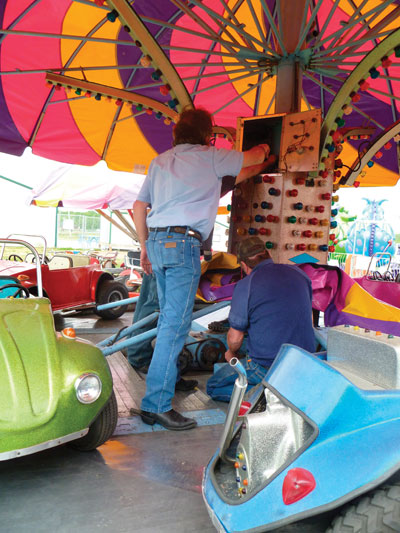
Photo 1. Inspectors check the lighting on a kiddie ride for grounding continuity.
Power Distribution
When you first arrive on the carnival or festival site, be sure to note the location of any overhead power distribution. Portable structures, including carnival rides, games, concessions and other units cannot be located within the area beneath a 4.5 m (15 ft) horizontal distance from conductors operating at more than 600-volts. Where the overhead conductors operate at 600-volts or less, no part of a portable structure can be located within a 4.5 m (15 ft) radius of the conductors.
Look around for rides or attractions that use large volumes of water and verify that the overhead conductor clearances of Table 680.8 are also met.
There are multiple options for power sources for carnival, fairs and other outdoor venues. Power can be obtained from permanently installed distribution in the park or fairgrounds or can be supplied directly from the local electric utility. Some shows will use a “hot truck,” a trailer with a high-voltage transformer meant to be connected to a utility primary distribution system, but often, one or more large generators will be positioned at deliberate locations.
The service equipment is generally located away from the action because it is not permitted to be accessible to unqualified persons unless it is lockable. From the service, feeder conductors and cables are laid out to the weatherproof power distribution units which, in turn, supply the game trailers, rides, joints, concession stands, ticket booths, etc.
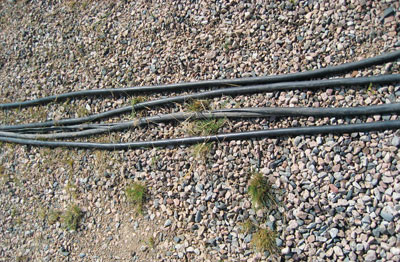
Photo 2. Conductors used for portable power distribution should be examined for physical damage.
Grounding Electrode System
Keep in mind that both portable transformers and generators will be separately derived systems. Be sure to verify that the system bonding jumper is installed and sized per NEC 250.28. Next, explore the available grounding electrode options:
- Permanently installed rods or concrete-encased electrodes may be available if the site is host to recurring events.
- A plate electrode may also be used, if it meets the requirements of 250.52(A)(7).
- Water or other underground metal piping in the area may meet the provisions of 250.52.
- If pipe or rods are used to create the grounding electrode system, two must be installed at least 1.8 m (6 ft) apart and they must be fully driven. Alternatively, 3 or more partially driven rods spaced at least 1.8 m (6 ft) apart may be an acceptable means of achieving the required low-impedance earth contact. To assure a connection to earth with no more than 25 ohms of resistance, on-site soil conditions must also be considered.
NOTE: Before an 2.44 m (8 ft), copper-plated, pointed rod is fully driven, location services should be consulted to avoid unintentional contact with underground utilities.
Check the size of the unspliced grounding electrode conductor against Table 250.66, remembering that a conductor to a rod electrode need not be larger than 6 AWG copper, and must be securely fastened in place or protected by a raceway or armor.
Feeders and Branch Circuits
Look at the generator and at all the distribution boxes to be sure that the conductor terminations are made with suitable terminals or lugs used for no other purpose, such as securing devices within the equipment or mounting the equipment. Make sure that terminals and lugs contain only one conductor, unless specifically approved for more.
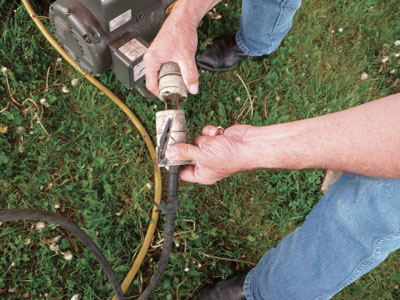
Photo 3. Cord caps and other equipment can be damaged during the road trip.
Whether the electrical distribution is extended from a transformer, generator or existing power source, it must be installed in approved wiring methods. Be sure that feeder and branch-circuit cables are sized per Article 210 and provided with overcurrent protection per Table 310.15(B)(1) or with the tap rules of Section 240.21.
Although you may see open wiring in walls of units that were built prior to today’s wiring standards, open wiring is not acceptable within the walls of attractions or concession trailers. In addition, you may find some older carnival rides that have the original open conductors installed along framework and covered with layers of paint. If these do not show signs of damage or disrepair, they may still be accepted.
That said, all damaged wiring needs to be repaired with approved methods or replaced. Cord and cable sheaths must be fully inserted and secured into cord caps, plugs or cam-lock devices.
Flexible Cords and Cables
Overcurrent protection for feeders and branch circuits extended using flexible cords and cables cannot exceed the maximum allowable ampacities in Table 400.5(A) (1) and (2) which has specifications for both single and multi-conductor cable types. Note that the adjustment factors found in Table 400.5(A)(3) for cables with more than 3 current-carrying conductors are the same as those in 310.15(B)(3)(a) for more than 3 current-carrying conductors in a raceway.
You may discover both single and multi-conductor cords with no type designation. These are not permitted, as cords are required to be type recognized in Article 400. Single conductor cables such as Type PPO or Type W are permitted in sizes 2 AWG or larger, but welding cables and locomotive cables are not allowed.
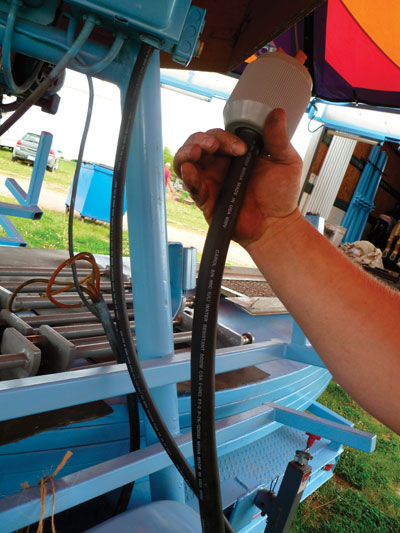
Photo 4. Conductors, cords and cables that cannot be properly repaired must be replaced.
Cords must be sunlight-, oil- and water-resistant and approved for extra-hard usage, although hard-usage cords and those with a “J” in the designation are permitted to be used within a portable unit, where not subject to physical damage. For example, SJO cords may be used to supply lighting inside a tent, where the cords are routed up and secured along the support poles.
Special precautions apply when cam-lock type connectors are used. These are quick-connect single conductor splicing and terminating devices, and while it’s easy to look at them as such, they are not attachment plugs or receptacles. They are meant to be installed and used by qualified persons and are to be guarded from accidental disconnection. When inspecting single-pole separable connectors look closely at the rules of 530.22 which apply, per 525.22(D).
As always, conductors of a feeder or branch circuit, including the equipment grounding conductor shall be part of the same cable assembly or must be grouped. Look to see that the individual conductors within cords are properly identified and that white conductors are only used as grounded — not equipment grounding — conductors.
You can easily use a simple lamp or audible-type tester on de-energized multi-conductor cords to verify continuity while verifying that conductors are properly terminated on cord caps and plugs.
Look at the overall distribution to assure that all the cords and cables are generally protected from physical damage. Splices are not permitted in cords; however, the outer covering of a cord may be repaired with listed shrink tubing products.
A good site plan will route all cables away from vehicular and pedestrian traffic, but some locations will be a challenge. In an open field, where a carnival or circus may set up for a few days, temporary shallow burial of the electrical distribution cords, permitted by NEC 525.20(G) may be appropriate.
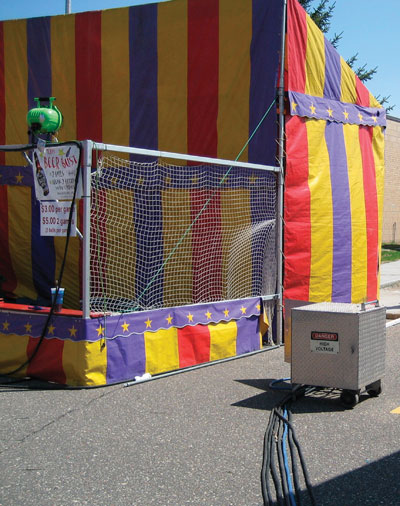
Photo 5. Distribution boxes located in areas accessible to the public must be lockable.
If these solutions are impracticable, cable protection can be provided by mats or ramps, but be sure that they do not create a greater tripping hazard than the exposed cords alone. Extremely durable, commercial-grade ramps are available, but adequate protection can be achieved by other approved methods.
Junction Boxes and Panelboards
Check the separation of grounded circuit conductors from equipment grounding conductors and look for adequate wiring space within the enclosures, as well.
When looking at the large distribution boxes and panelboards make sure they are designed to be weatherproof and are situated so that the bottom of the enclosure is no less than 6 inches above the ground.
And when inspecting switch, circuit breaker and fuse enclosures be sure that they are dead-front, so operators and the public are never exposed to live parts.
Equipment Bonding
Remember that all electrical equipment must be supplied by feeders and branch circuits that contain properly sized equipment grounding (bonding) conductors and that the continuity of the equipment grounding conductor system must be verified each time that portable electrical equipment is connected.
Not only receptacle devices, but all the equipment and enclosures must have the equipment grounding conductor connected to an approved grounding terminal. The EGCs are permitted to be bare; but if they are covered or insulated, single conductor or part of a multi-conductor cable, they must be green or identified with green paint or tape.
As with permanently installed wiring systems, the equipment grounding (bonding) conductors must be installed as a complete point-to-point system, so verify that enclosures are not used for grounding continuity.
On larger sites, you may see mobile units (rides, concessions, games, tents, etc.) supplied from different power sources and positioned with less than 3.6 m (12 ft) between them. Be sure that those units are bonded together to eliminate the possibility of potential difference, as required by 525.11. The bonding conductor can be covered, insulated or bare and is not required to be installed with other circuit conductors or in a raceway. Use the rating of the largest overcurrent device supplying the units and Table 250.122 to size the bonding conductor, keeping in mind that it cannot be smaller than 6 AWG.
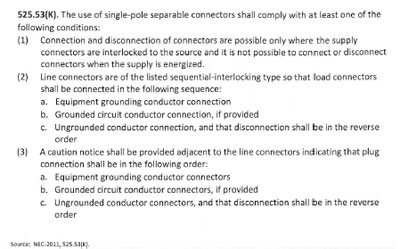
Photo 6. Single-pole separable connectors (cam-locks) used for portable wiring on festival sites must be installed per 525.53(K).
Disconnecting Means
Section 525.21 requires all rides, tents, and concessions to have a readily accessible switch that disconnects all power to the unit. The switch must disconnect the portable structure from all ungrounded conductors and be located within sight of and within 1.8 m (6 ft) of where the operator normally is stationed. This requirement is especially important when the ride is in operation; and for games and/or rides where the operator’s console is located away from the power disconnect switch, a shunt trip disconnecting device can be permitted. Be sure to check the functionality of the shunt-trip device.
Remember, too, that some larger rides may have a feeder for motor loads and a separate feeder for lighting, and if so, the switches must be positioned side-by-side or together, as this is intended as both a life safety switch as well as a maintenance disconnecting means. Check to see that these are clearly identified because in an emergency situation, it may not be the operator who needs to throw the switch to disconnect power.
Portable Lighting
When wiring for temporary lighting is installed inside tents, game trailers, concessions and other portable structures, it must be adequately secured with wire ties or other approved means. Festoon lighting or cord sets, both inside and outside, have to be installed at least 10 feet above ground where accessible to the public. The lamps themselves must be protected from accidental breakage by a suitable fixture guard.
While open conductors are generally not permitted for permanent or portable installations, they are allowed when used for festoon lighting or when part of a listed assembly. Section 225.6(B) requires a minimum of 12 AWG conductors for festoon lighting unless there is a messenger providing additional support. Be sure that neither the conductors nor the messengers are attached to a fire escape or secured to plumbing piping or downspouts.
GFCI Protection
Because of the electrical hazards associated with the use of electricity outdoors, all of the 125-volt, single-phase, 15- and 20-ampere non-locking-type receptacles on the festival grounds that are readily accessible to the general public or used for set-up are required to have GFCI protection.
But not only the receptacles, all equipment supplied from a 125-volt, single-phase, 15- or 20-ampere branch circuit that is readily accessible to the general public is required to have GFCI protection. This would include branch circuits used for free-standing perimeter lighting or lighting strings installed on fences as well as portable signs.
Both permanently installed GFCI receptacles and listed GFCI cord sets are permitted to be used to achieve the required level of life-safety protection. It is important for operators as well as inspectors to regularly check the functionality of the GFCI devices.
Remember the exception from the GFCI requirements for locking-type receptacles that are not accessible from grade. This provision would apply to the 120-volt interconnecting cables on removable portions of rides or concessions and that are not used to supply portable hand tools or equipment.
While 525.23 does require GFCI protection for almost all of the 15- and 20-amp, 120-volt distribution located outdoors, egress lighting that may be used in a tent or other portable structure is not permitted to be connected to a circuit or receptacle that is protected by a GFCI.
Summary
At the outset, it can seem like electrical inspections of Article 525 venues are significantly more difficult than inspections of other types of projects. However, the basic Code principals are the same whether the electricity is portable or permanent: a proper grounding electrode system; suitable overcurrent protection for services, feeders and branch circuits; guarding from weather and physical harm; intentional bonding of equipment and ground-fault circuit-interrupter protection for personnel where necessary.
Children of all ages attend the local festivals, fairs, carnivals and circuses without a thought toward their exposure to electrical hazards. Completing a thorough electrical inspection before the first customer enters the gate is the key to protecting your neighbors, friends and family.














Find Us on Socials